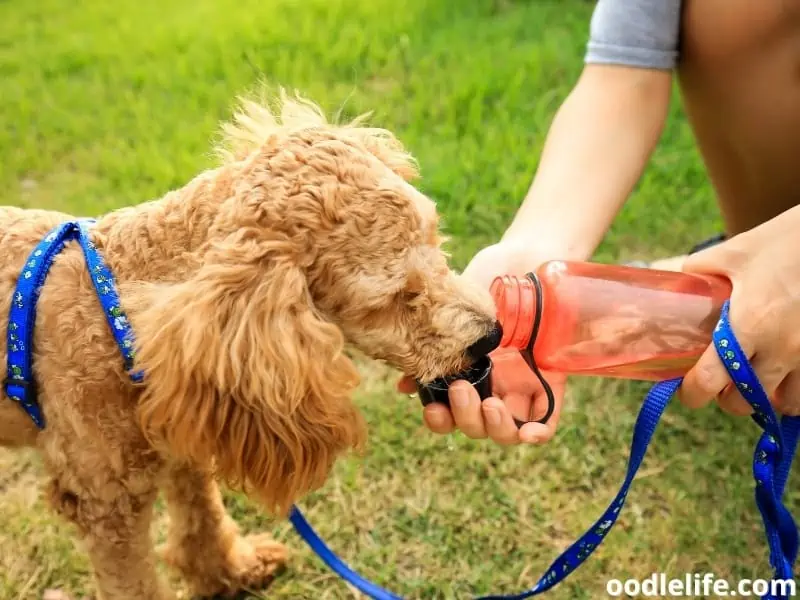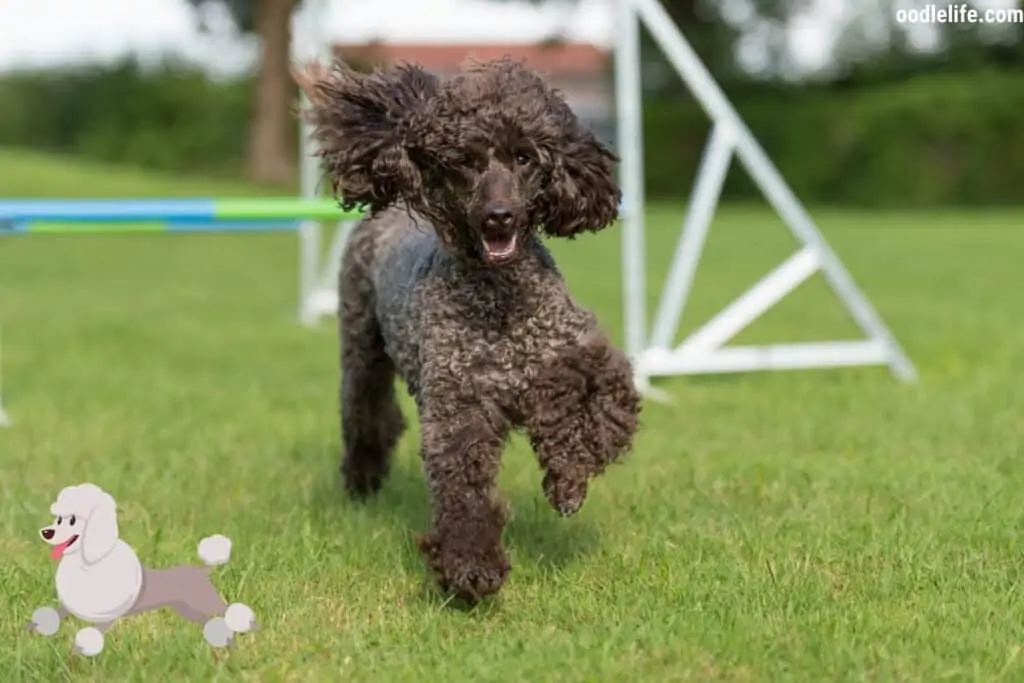How Often Should You Walk a Poodle?
Walking is essential exercise for dogs that promotes socialization, bone strength, muscle development, and disease prevention. Going on a stroll with your Poodle is also a spectacular bonding exercise that encourages a healthier lifestyle.
Poodles are smaller dogs with shorter strides, so their exertion levels will differ from yours. While walking is highly beneficial for them, you must moderate it to prevent your dog from overexerting itself.

So, how often should you walk a Poodle?
The answer to that question depends on your dog’s age and health. Let’s talk about why walking your Poodle is a biological need. Then, I’ll teach you how to determine how long your walks should be and other helpful tips.
Does My Poodle Need Walks?
Your Poodle absolutely needs walks. Frequent exercise is essential to preventing obesity, lower-functioning organs, weaker bones, and shorter lifespans. This is true of all dog species, including Poodles.

However, as a dog bred for distinct qualities, Poodles are susceptible to more health issues than most breeds. A study by BioMed Central found that they have a genetic disposition for two illnesses: sebaceous adenitis and Addison’s disease.
Helping your Poodle stay active is the best defense against illness susceptibility. It also comes with benefits like socialization and routine formation, resulting in better behavior and a happier pet. In addition, walking is one of the best ways for you and your pet to bond.
Even senior Poodles and young puppies need exercise. Late-stage pregnancy and certain illnesses are the only reasons why your dog might not benefit from physical activity. Otherwise, try to walk them every day.

When Should I Walk My Poodle?
Every dog needs periods of exercise and periods of rest. These vary based on your dog’s health and age. For instance, if your Poodle is pregnant, it shouldn’t walk within a week of its expected delivery date.

Under normal conditions, even adult Poodles can only tolerate one hour of exercise per day.
How do you determine how much exercise your Poodle needs? A general rule is to add five minutes for each month of your dog’s age. For example, a one-month Poodle needs five minutes of walking per day and a six-month pet needs thirty minutes.
If you own multiple dogs, you may want to lump their exercise routines together. However, dogs with shorter strides exert more energy per minute than larger ones, so adhere to this five-minute rule.
Poodles reach adulthood at about 1 or 2 years depending on size and gender. At that age, most can tolerate a combined hour of exercise per day. I advise three sessions of 20 minutes to give them plenty of time to rest.
As long as you stay within these boundaries, you can walk your Poodle as often as every day. If your pet shows signs of overexertion, such as sluggishness and dehydration, avoid taking them on walks for the remainder of the day. If possible, I recommend daily walks so that your precious pets can stay healthy.

Tips for Walks With Your Poodle
Walking is one of the most accessible and easy routines for maintaining your dog’s health. However, while a stroll might not seem like much, overdoing it can cause Poodles to suffer from exhaustion and overexertion. Here are some tips that make walking easier, safer, and even more beneficial for your Poodle.
Don’t Risk Days That Are Too Hot or Too Cold
Unless you have clothing and the proper equipment for your dog, walking in extreme conditions will be more taxing for them. Hot days can cause dehydration for dogs, and hot pavement can lead to paw burns.
Cold days can also be difficult for small dogs such as Poodles. Unlike larger breeds, they begin to experience discomfort at around 40 degrees Fahrenheit, and temperatures lower than 20 degrees are probable cause for illness. (A shivering Poodle is not a good sign)
While some equipment and pet clothes can withstand the elements partially, it’s best to avoid walking your Poodle on these days altogether. They suffer more from extreme weather than you do.

Match Their Pace
Many dog owners see walks as a win-win: it’s a chance to get cardio exercise for the body and your pet. However, I advise against this mentality, because the most critical tip is to match your dog’s pace. Poodles in particular have short strides, even smaller if you own a toy Poodle.
As a result, your running or jogging pace is likely exhausting for them.
Note their pace and monitor for signs of exhaustion and dehydration. For them, the walks should be brisk. Follow along at their side and match their natural movement.

Bring a Portable Water Source
Since Poodles are smaller dogs, they often use more energy than you think to walk and run. Heatstroke, dehydration, overexertion, and more can happen if you push them too hard outdoors. Bringing a portable, dog-friendly water bottle will allow you to respond quickly if any of these symptoms occur.

Consider Using a Harness
Harnesses and collars fulfill similar roles, but the latter is not as prone to causing discomfort. When training young puppies to walk, using one helps to protect them from damage caused by pulling and tugging. Even adults are subject to these dangers, however.
When Poodles tug and pull, leashes can cause throat damage.
Harnesses are safer for dogs and avoid such risks. However, they take longer to put on and cause discomfort in hot weather. Harnesses help to socialize dogs and teach them routines, making walking easier for both pets and owners.
Alternatives for Walking Your Poodle
Walking is a primary form of exercise for dogs. But weather, health, and other factors may disrupt daily walking routines. On those days, there are some good alternatives to taking a stroll.
Playing, fetching, and swimming are three excellent replacements for walking. The first two are great for indoor days. Fetching a toy and chasing is more effective for small dogs, giving them plenty of exercise in your home.
Poodles are naturally great swimmers due to how they were bred and will enjoy a pool, creek, pond, or other shallow body. Be sure to use a floatation device and monitor them closely.

Conclusion: How Often Should You Walk A Poodle?
To wrap up, you should walk your Poodle daily as long as the weather isn’t extreme. Each day, walk your pet five minutes for every month of their age. In adulthood, restrict exercise to an hour per day to keep them healthy. Be sure to use a harness, bring along some water, and work with them as they go.